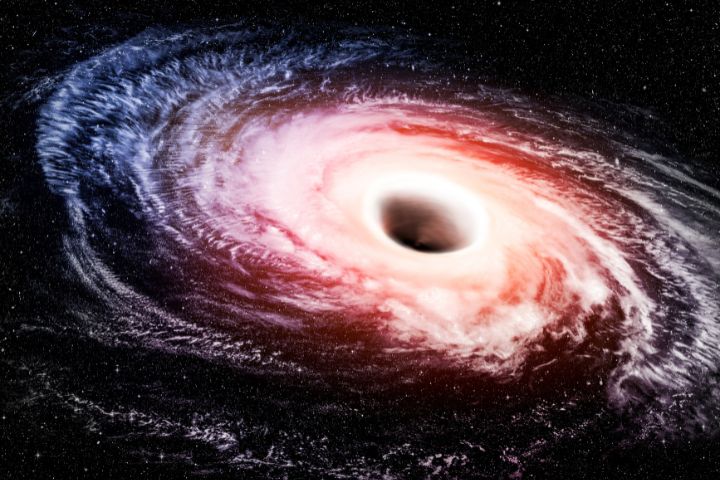Astrophysics, everything you need to know about physics applied to astronomy

What is astrophysics
Astrophysics is the study of celestial bodies through physical laws . Study the composition and evolution of objects such as stars, black holes or galaxies.
Astrophysicists use many areas of physics to investigate the properties of stars. Some of these disciplines are relativistic physics, quantum physics, statistical physics, thermodynamics, atomic physics or electromagnetism.
astrophysics It is based mainly on experimental observation through telescopes and photometry devices.
Today we will talk about
What astrophysics studies
Astrophysics has many specialized areas according to the part of the universe and stars that are studied. Some of these fields investigate the generation of stars and planets, others the birth of our universe or the incredible properties that objects in the universe such as black holes or neutron stars have.
We have chosen some examples so that you understand what parts of astrophysics are studied and how astronomy and physics are combined to understand the phenomena that occur so far from us.
Study of the components of the stars
One of the main studies of astrophysics is the chemical composition of the stars. A technique called astronomical spectroscopy is used. It is based on studying the absorption spectra of stars which vary depending on what wavelength is absorbed.
Each element has its own absorption spectrum so it allows us to know the composition of the stars.
Movements of celestial bodies
This part of astrophysics is closely related to positional astronomy . Its study is based on establishing coordinate systems to measure the movement of stars, planets or galaxies. Some of these systems are the altazimuthal system, equatorial system, ecliptic system or galactic system.
The electromagnetic radiation of galaxies is also analyzed to find out if they are moving away or approaching.
Thanks to Doppler effect We know that, if a galaxy moves away, the wavelength increases while the frequency decreases. This causes us to receive a red shift in the electromagnetic spectrum.
On the other hand, if we receive a blue shift it means that the frequency is higher so the wavelength is shorter. This means that the galaxy is getting closer.
The origin of the universe
Astrophysics joins with cosmology to try to explain the beginning of the universe. The most popular theory is inflation.
The Big Bang could have been produced by a quantum fluctuation of the field that generates the expansion of the universe. The inflaton.
This fluctuation causes the sudden exponential inflation of the universe. At that moment the space and time we know today were created. A few moments later, when the temperature began to decrease, the gluons and quarks joined together to form baryons, a process known as baryogenesis.
Little by little the different particles were created and the fundamental interactions appeared: the electromagnetic force, the weak nuclear force, the strong nuclear force and the force of gravitation.
To understand all these phenomena, astrophysics has to make use of quantum mechanics, special relativity and general relativity.
black holes
Black holes are objects with extraordinary properties that have been studied by the best physicists and mathematicians in the world such as Stephen Hawking or Roger Penrose.
Black holes were theoretically discovered more than 100 years ago when the Einstein field equations in conditions of enormous density of matter. This density caused an enormous deformation in space-time that gave very peculiar properties to the solution.
For many years it was thought that perhaps it was just a mathematical artifact. Finally, thanks to advanced astronomy techniques, They were able to capture the signals from these black holes . Verifying its existence experimentally.
Astrophysics uses general relativity to understand how black holes work and what happens inside them. One particular field is numerical relativity which attempts to solve the equations of general relativity using numerical calculations.
The equations of general relativity are nonlinear coupled differential equations which can only be solved exactly when there is a very high degree of symmetry.
For this reason, in many realistic astrophysical calculations need to be made using supercomputers and use numerical calculation to get the solution to the equations as close as possible.
Thermonuclear astrophysics
Thermonuclear astrophysics is the field of astrophysics that is dedicated to the study of nuclear processes that take place within stars like the sun.
Inside these stars, enormous temperatures are reached, allowing nuclear fusion to occur. This is the process by which hydrogen nuclei fuse to generate helium. This phenomenon is what keeps the stars alive.
Study astrophysics
In most universities in the world, astrophysics studies are done as a master's degree and not as a university degree. This is because extensive knowledge in different areas of physics is required to become a good astrophysicist.
During the degree, the student is prepared with subjects such as classical mechanics, statistical mechanics, quantum mechanics or special and general relativity, in addition to many mathematical subjects that provide the student with the perfect foundation to be able to continue with master's and doctoral studies related to astrophysics.

